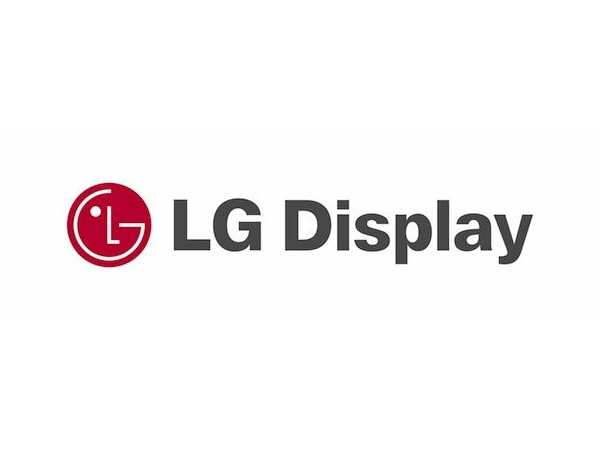South Korean technology firm LG has announced that it is investing $656.7 million in forming a next-generation display panel production line.
The manufacturing line will commence at the firm's P9 factory in Paju, South Korea. It is planning to produce eighth-generation organic light emitting diode (OLED) TV panels at a capacity of 26,000 per month.
LG said mass production of the forthcoming 8G panels, which will deliver thinner and more energy efficient displays for televisions, will start sometime during the first half of 2014.
LG is the world's largest flat-screen maker, with Apple being one of its clients. Samsung, its chief competitor in the display market, is selling a television every three seconds.
Although the display market has experienced a decrease in growth recently, analysts predict forthcoming growth in the OLED TV sector, which is expected to be worth $3 billion by 2015.
Contact Us for News Tips, Corrections and Feedback
Get Tom's Hardware's best news and in-depth reviews, straight to your inbox.

Zak Islam is a freelance writer focusing on security, networking, and general computing. His work also appears at Digital Trends and Tom's Guide.
-
innocent bystander OLED is where the meat is for the display industry for the next several years. It's a much bigger story than 4K or 3D were.Reply
I can't wait to see reasonably priced, high resolution desktop and laptop displays to hit the market.
IB -
uhh3000 innocent bystanderI can't wait to see reasonably priced, high resolution desktop and laptop displays to hit the market.IBReply
I just recently got a rather nice Asus 24" 1920x1080 led monitor for $175, so there are some nice, basic, low response time HD monitors out there. Unless you mean something like 2560x1440, in which case I completely agree. -
downhill911 innocent bystanderOLED is where the meat is for the display industry for the next several years. It's a much bigger story than 4K or 3D were. I can't wait to see reasonably priced, high resolution desktop and laptop displays to hit the market.IBIf I could choose OLED(1080p) vs. 4K I would go for 4K anytime, but there is still not enough content though.Reply
-
alidan uhh3000I just recently got a rather nice Asus 24" 1920x1080 led monitor for $175, so there are some nice, basic, low response time HD monitors out there. Unless you mean something like 2560x1440, in which case I completely agree.Reply
except oled can give you real blacks and no backlight flaws, with an acutely sub 2ms response time (i believe, i have read even lower)
an ok oled and a great lcd... i would pick the ok oled
what you have is a lcd monitor that is lit from the side with leds most likely, as 175 isnt enough for matrix lighting ( i dont know the real name of it, but the leds behind the screen and not on the side)
-
blazorthon downhill911If I could choose OLED(1080p) vs. 4K I would go for 4K anytime, but there is still not enough content though.Reply
What if you had to choose between 2560x1600 with OLED and 4K (lets say 3820x2160 to be specific) with current display tech? If you don't mind me asking, would monitor size impact your decision and if so, at what point(s)? -
blazorthon innocent bystanderOLED is where the meat is for the display industry for the next several years. It's a much bigger story than 4K or 3D were. I can't wait to see reasonably priced, high resolution desktop and laptop displays to hit the market.IBReply
Some people might be surprised at me, but I think that a modification of CRT could be better. CRT flat-screen displays were made only a few inches thick with some of the best models right before they were abandoned and I bet that we could get them well under an inch thick with current technology along with some significant power efficiency improvements and other improvements. CRTs have some advantages that no display technology since them has copied such as not having a native resolution. If we'd kept on going with CRT technology at least as an after-thought, we could easily have affordable displays capable of running 4K resolutions if we wanted.
So many possibilities... For example, what if the screen was split into say sixteen sections and gave each a small emitter instead of one big one for the whole display? I am not an expert on monitors, but I think that something like that could easily let us cut down on display depth down to competitive levels with most LCD displays without sacrificing the advantage of not having a native resolution. -
deksman I find it stupid that they might be making screen using same type of non-abundant materials as before.Reply
Synthetic diamonds (which can be made in abundance and sustainability) were usable for this in the late 90-ies.
Same thing with carbon nanotubes.
With graphene, it was doable since late 2008 when the band-gap issue was solved.
At least if they were recycling all those resources on the landfills and made superior synthetic materials with latest methods of production (which would reduce input of energy and raw materials - creating a lot more using a lot less), then we'd have some prospects.
And look at the manufacturers of laptops.
Most high-end laptops get 1080p resolutions.
Mid-range ones STILL use 768p or 800p resolutions (whereas smartphones and pads are already comfortably using at least 50% more (up to 2x bigger resolutions).
-
alidan blazorthonWhat if you had to choose between 2560x1600 with OLED and 4K (lets say 3820x2160 to be specific) with current display tech? If you don't mind me asking, would monitor size impact your decision and if so, at what point(s)?Reply
for a tv... i would chose oled over 4k even if the oled was 720p
1) no 4k content
2) i sit over 10 feet away from my tv, if i for 4k it would have to be 120+ inch to be noticeable
3) even at 10 feet away, and 720p at 50 inches, an oled would be cheaper than the 4k (current prices) and give me a better over all picture (may not be as high res, but real blacks... my god do i miss those)
blazorthonSome people might be surprised at me, but I think that a modification of CRT could be better. CRT flat-screen displays were made only a few inches thick with some of the best models right before they were abandoned and I bet that we could get them well under an inch thick with current technology along with some significant power efficiency improvements and other improvements. CRTs have some advantages that no display technology since them has copied such as not having a native resolution. If we'd kept on going with CRT technology at least as an after-thought, we could easily have affordable displays capable of running 4K resolutions if we wanted.So many possibilities... For example, what if the screen was split into say sixteen sections and gave each a small emitter instead of one big one for the whole display? I am not an expert on monitors, but I think that something like that could easily let us cut down on display depth down to competitive levels with most LCD displays without sacrificing the advantage of not having a native resolution.
those were called sed tvs, and they were the stop gap between lcd and oled
however the people doing sed tv got held up in court for so long that by the time they could make an sed tv, they would be coming to market with something thicker, heavier, and at least 4X the cost of a comparable lcd/plasma screen
personally i was holding off on sed for a computer monitor... but those plans changed a few years back.
-
I work in TV studios, matching exposure and colour balance between cameras. I'm very picky about what monitors I use. I hate using LCDs because the black level is no good and motion handling is very poor. Cameramen hate them because there is a significant lag, and it's impossible to focus on moving pictures. CRT monitors were the best option for colour matching, but OLEDs are taking over fast. There tends to be a slight colour change with angle - the red is more directional on Sony panels so they go cyan as you move to the side but otherwise they are superb displays. I have a 15" LG OLED in my kitchen, which I much prefer to the big LCD in the living room. So yes, give me a 1080i OLED in preference to a 4K LCD any day.Reply
